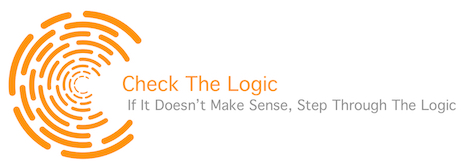6 Ways to Take Control of Your Medical Treatment

Excluding a health emergency, your physician is not the primary decision maker regarding your medical treatments. You decide what treatments (surgery, medications, and / or procedures) are appropriate.
Your Doctor’s Role
Your doctor’s role in your medical treatment is two-fold – consultant and mechanic. As a consultant, your doctor’s job is to diagnose (i.e., assess your current physical state) and prescribe (i.e., recommend courses of action that will hopefully improve your state). This process requires your doctor to, first, listen to your symptoms (what you are experiencing) and, second, perform several checks for signs (what he observes) of the reported problem. With these two bits of information, your doctor follows an algorithm or flow chart in his mind that leads to a diagnosis. Each diagnosis (e.g., diabetes, heart disease, cancer, obesity, etc.), as he has learned from his trainings, has a general recommended course of action.
The recommended courses of action fall into one of four groups – lifestyle modification, medication, medical procedure, or surgery. The former, falls under your control as the patient. The latter three actions fall under your doctor’s control as a human mechanic. That is, your doctor prescribes medication or executes procedures or surgeries aimed at fixing or repairing the diagnosed problem.
You Role
Once the doctor renders his diagnosis and recommendations. It’s up to you, the legally competent patient, to determine the proper course of action to pursue. (It is implied in this process that you have a basic understanding of your body’s major systems; you are knowledgeable about the ramifications of your lifestyle choices; you know to ask clarifying questions regarding the things you do not understand.)
Keep in mind: If your doctor, detects that you are unwilling, unable, or apathetic about making a lifestyle modification, his pool of recommendations shrink to medications, medical procedures, and surgeries. Not only is that true, the burden of decision makings shifts to the doctor. Now, the doctor must take on the role of educator and decision maker, along with the need to work quickly. (This added burden is likely to breed resentment.)
Remedy
To alleviate the doctor’s burden and to recapture your decision-making power, take the following 6 steps:
- Educate yourself on your body’s ten (10) major systems – skeletal, muscular, nervous, endocrine, cardiovascular, lymphatic, respiratory, digestive, urinary, and reproductive.
- Know which health factors are under your control – diet, exercise, stretch, sleep, and attitude.
- Increase your understanding of lifestyle diseases – heart disease, stroke, diabetes, obesity, metabolic syndrome, chronic obstructive pulmonary disease, and some types of cancer.
- Exercise control over the factors you control.
- Consult with other professionals (i.e., nutritionist/dietitian, fitness consultant, etc.), If you do not know / recall what to do.
- Ask your doctor clarifying questions. 1) Find out which factors of a diagnosis are under your control. 2) If you don’t understand something about a recommendation, ask for a leaflets or pamphlet that explain the issue in greater detail.
What do you think?




